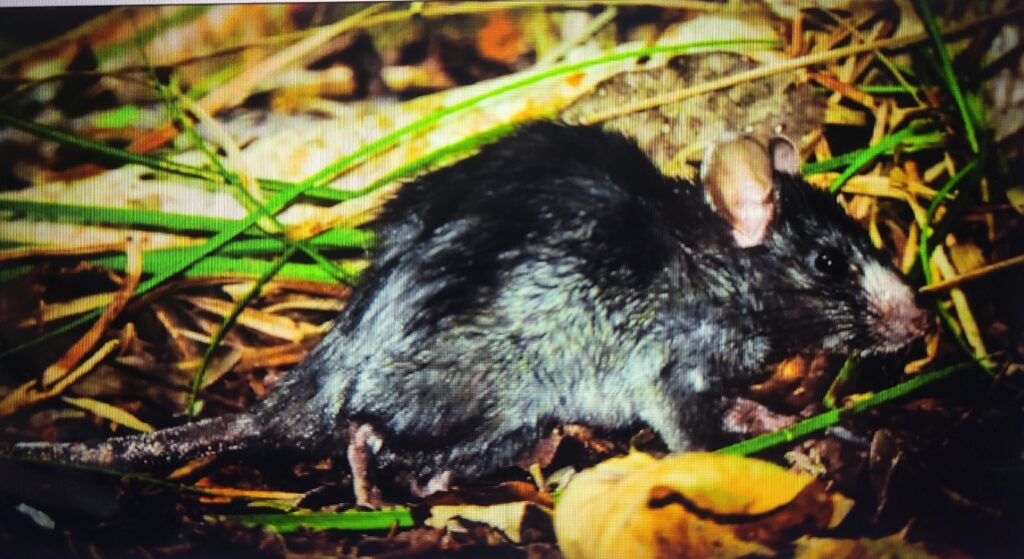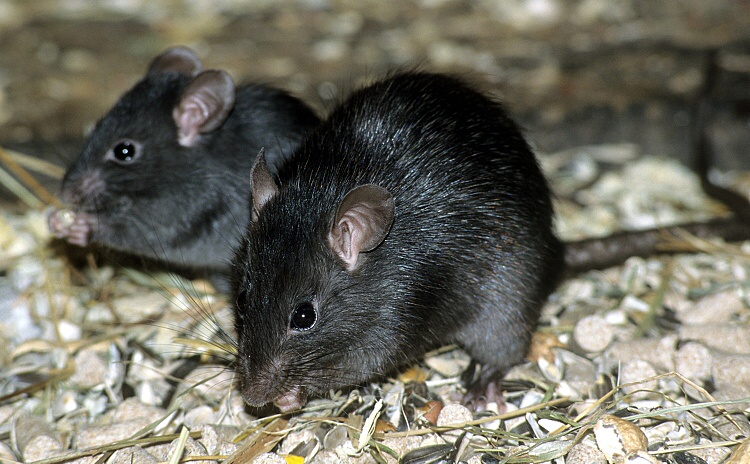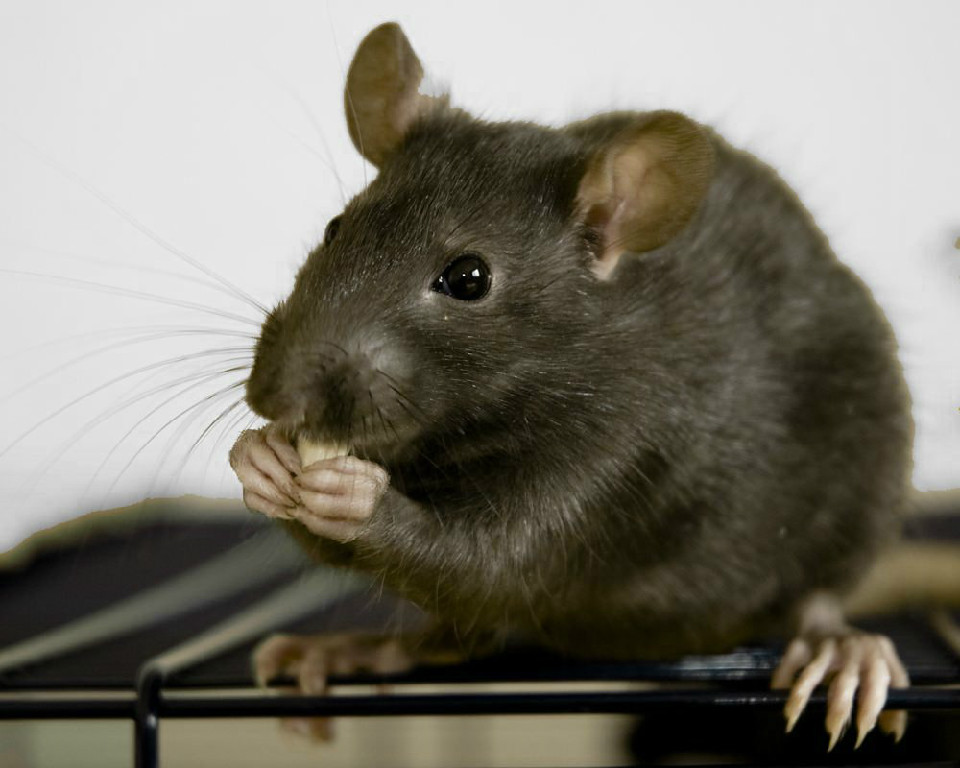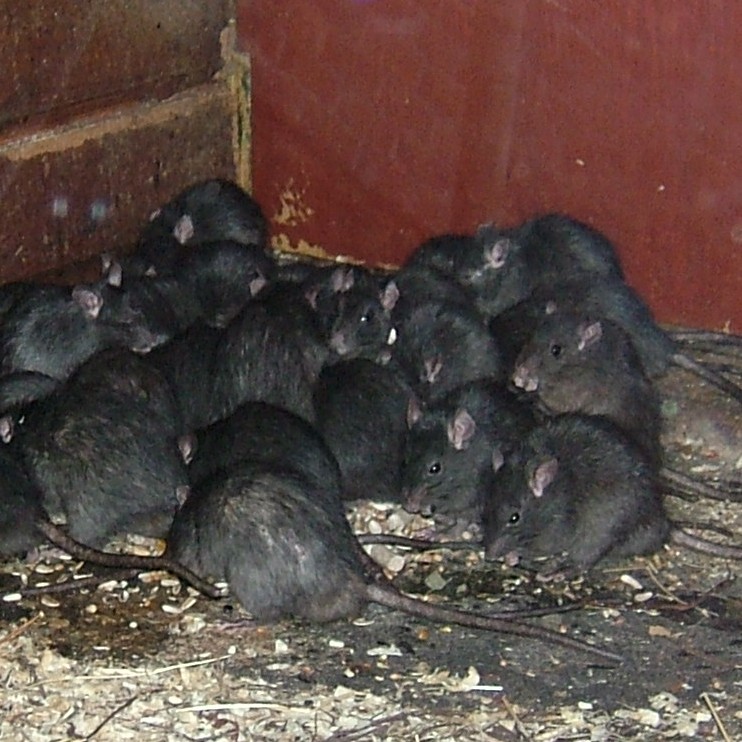
Black Rat: (Rattus rattus)
Black rats (rattus rattus), also known as the roof rat, ship rat and house rat, is a member of the muridae family. They average between 16 to 22 cm in head and body length, their tails are almost as long as their bodies averaging 19 cm or longer, weighing between 4 to 12 ounces. Males are larger than the females.
Black rats have finer fur and slender bodies that have several color combinations which consist of black, gray, to light brown and white. Their under – parts are a lighter brown or pale gray. Their eyes are round and black in color. Their ears are large. Their noses are pointed. Their tails are fur-less and slightly longer than its head and body. Their front paws have 4 toes and their back paws have 5 toes. Black rats also have 16 very sharp teeth. Black rats are found throughout the world, including Florida. They are often found in areas such as forests, coastal areas as well as high populated areas. Black rats live in the upper and dryer parts of structures and trees. Basically any location that provides shelter, food and water.
Black rats are omnivorous, which mean they consume both plant and animals, however they mainly prefer a vegetation diet. Their diet consists of seeds, nuts, grains, fruits, stems, leaves, fungi, fish, frogs, insets, pet food, livestock feed and other invertebrates and vertebrates.
Black rats are primarily nocturnal. They tend to live in large social groups that consist of several male and females, having one or two dominant males, although the females tend to be more aggressive than the males. Black rats are agile climbers and often nest in high places such as tree tops or in the upper parts of structures. Their nests consist of shredded materials such as sticks, leaves and other vegetation and or cloth. They are also capable of creating burrows and nests in the ground when such resources are not available. Black rats are territorial and will defend its home range when threatened. Their territory is no larger than 100 square meters and mainly near strong food sources. Black rats communicate vocally by producing squeaking sounds when socializing or when threatened, also when threatened they show aggressive postures and engage in physical contact. They also produce an oil substance, which is used to mark certain areas of its territory. Black rats relay on their sense of vision, hearing, touch and smell when roaming their environment. Black rats can begin breeding as early as 3 to 5 months of age. Black rats breed year around especially when environmental conditions permit, peeking in the summer and autumn months, producing 5 litters a year. Their gestation period is between 21 to 29 days long. The average litter size is between o 2 to 8 young, but could have up to 12 young. The female raises their young without the help from the male. When the young are born they are fur-less and blind. Their eyes begin to open around 12 to 15 days, at this time their fur begins to grow. The young are completely weaned and ready for independence at 3 to 4 weeks of age.
Black rats are known to carry numerous diseases such as, salmonellosis, leptospirosis, rat bite fever, tularemia and the bubonic plague which can be transmitted to humans, pets and livestock. They also carry parasites which can be passed to humans, pets and livestock.
Black rats severely damage crops, farms and fruit trees. They can also cause sever damage to structures by creating dens in structures, gnawing on the electrical wiring, plumbing pipes, causing foul orders from defecating and urinating and in some cases, when their young die.


